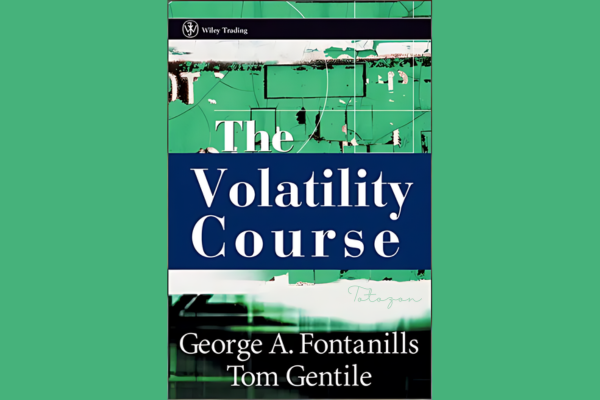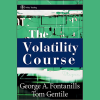-
×
 Crystal Ball Pack PLUS bonus Live Trade By Pat Mitchell - Trick Trades
1 × $20.00
Crystal Ball Pack PLUS bonus Live Trade By Pat Mitchell - Trick Trades
1 × $20.00 -
×
 The Orderflows Trade Opportunities Encyclopedia with Michael Valtos
1 × $8.00
The Orderflows Trade Opportunities Encyclopedia with Michael Valtos
1 × $8.00 -
×
 Options Trading & Ultimate MasterClass With Tyrone Abela - FX Evolution
1 × $54.00
Options Trading & Ultimate MasterClass With Tyrone Abela - FX Evolution
1 × $54.00 -
×
 The Best Option Trading Course with David Jaffee - Best Stock Strategy
1 × $15.00
The Best Option Trading Course with David Jaffee - Best Stock Strategy
1 × $15.00
The Volatility Course + The Volatility Course Workbook with George Fontanills & Tom Gentile
$75.00 Original price was: $75.00.$6.00Current price is: $6.00.
File Size: 85.7 MB
Delivery Time: 1–12 hours
Media Type: Online Course
Content Proof: Watch Here!
You may check content proof of “The Volatility Course + The Volatility Course Workbook with George Fontanills & Tom Gentile ” below:

The Volatility Course + The Volatility Course Workbook with George Fontanills & Tom Gentile
Introduction
Volatility in financial markets presents both opportunities and risks for traders and investors. Understanding and mastering volatility is crucial for success. “The Volatility Course” and its companion workbook by George Fontanills and Tom Gentile offer comprehensive insights and practical exercises to navigate market fluctuations effectively. This article explores the key concepts and strategies from these resources, providing a valuable guide for traders aiming to harness volatility to their advantage.
What is Volatility?
Definition of Volatility
Volatility refers to the degree of variation in the price of a financial instrument over time. It is a statistical measure that reflects the uncertainty or risk associated with the price changes of the asset.
Types of Volatility
Historical Volatility
Historical volatility is based on past price movements and provides an empirical measure of an asset’s price fluctuations over a specific period.
Implied Volatility
Implied volatility is derived from the prices of options and reflects the market’s expectations of future price fluctuations.
The Volatility Course
Overview of The Volatility Course
“The Volatility Course” by George Fontanills and Tom Gentile is a comprehensive guide that teaches traders how to understand and manage market volatility. It covers various strategies and tools to capitalize on volatile markets.
Key Concepts Covered
Understanding Market Volatility
The course begins with a thorough explanation of what volatility is and why it matters in trading.
Measuring Volatility
Traders learn about different methods to measure volatility, including standard deviation, beta, and the VIX index.
Volatility Strategies
The course outlines several strategies for trading in volatile markets, such as straddles, strangles, and butterflies.
The Volatility Course Workbook
Purpose of the Workbook
The companion workbook is designed to reinforce the concepts taught in the main course through practical exercises and real-world examples.
Practical Exercises
Calculating Volatility
Exercises include calculating historical and implied volatility using real market data.
Strategy Implementation
The workbook provides step-by-step guides to implement various volatility trading strategies, allowing traders to practice and refine their skills.
Case Studies
Case studies offer insights into how professional traders apply volatility strategies in different market conditions.
Volatility Trading Strategies
Options Strategies
Straddles and Strangles
Straddles
A straddle involves buying both a call and a put option at the same strike price and expiration date, allowing traders to profit from significant price movements in either direction.
Strangles
A strangle is similar to a straddle but involves buying a call and a put option at different strike prices, typically out-of-the-money, to reduce costs while still capitalizing on volatility.
Butterflies and Condors
Butterfly Spread
A butterfly spread involves buying and selling multiple options to create a position with limited risk and limited profit potential, designed to profit from low volatility.
Iron Condor
An iron condor is a combination of a bull put spread and a bear call spread, allowing traders to profit from low volatility by collecting premiums.
Futures and ETFs
Volatility Futures
Trading volatility futures, such as VIX futures, provides a direct way to trade market volatility.
Volatility ETFs
Volatility ETFs offer another avenue for trading volatility, tracking indexes that measure market volatility.
Risk Management in Volatility Trading
Hedging Techniques
Protective Puts
Using protective puts allows traders to hedge against potential losses in a volatile market.
Covered Calls
Writing covered calls can generate income while providing some downside protection.
Position Sizing
Proper position sizing is crucial in managing risk, especially in volatile markets where price swings can be significant.
Setting Stop-Loss Orders
Implementing stop-loss orders helps protect against unexpected adverse price movements.
Benefits of Mastering Volatility
Enhanced Profit Potential
Understanding and effectively trading volatility can lead to significant profit opportunities, especially during periods of high market uncertainty.
Improved Risk Management
Mastering volatility strategies allows traders to manage risk more effectively, protecting their portfolios from sudden market shifts.
Versatility Across Markets
Volatility strategies can be applied across various markets, including stocks, options, futures, and ETFs.
Challenges in Volatility Trading
Complexity of Strategies
Volatility trading strategies can be complex and require a deep understanding of options and market dynamics.
Market Timing
Accurately timing the market to capitalize on volatility is challenging and requires skill and experience.
Emotional Discipline
Volatility can lead to emotional decision-making. Maintaining discipline and sticking to a trading plan is crucial.
Tips for Success in Volatility Trading
Continuous Learning
Stay updated with the latest market trends and continuously refine your strategies through education and practice.
Practice with Paper Trading
Use paper trading to practice and test volatility strategies without risking real capital.
Diversify Strategies
Diversify your trading strategies to manage risk and maximize profit potential in different market conditions.
Conclusion
“The Volatility Course” and its workbook by George Fontanills and Tom Gentile provide a comprehensive framework for understanding and mastering market volatility. By learning and applying the strategies and techniques outlined in these resources, traders can enhance their ability to navigate volatile markets and achieve consistent success.

Commonly Asked Questions:
- Business Model Innovation: Accept the truth of a legitimate business! Our strategy is organising a group buy in which participants share the costs. We use these cash to acquire popular courses from sale pages and make them available to people with limited financial resources. Despite the authors’ worries, our clients love the cost and accessibility we give.
- The Legal Environment: Yes or No The legality of our activity is ambiguous. While we don’t have specific permission from the course authors to resell the material, there is a technicality at work. The author did not specify any limits on resale when purchasing the course. This legal intricacy is both an opportunity for us and a boon for individuals looking for low-cost access.
- Quality Control: Uncovering the Truth
Getting to the heart of the issue – quality. Purchasing the course straight from the sale page guarantees that all documents and resources are the same as those obtained through traditional channels.
However, we distinguish ourselves by going beyond personal research and resale. It is crucial to note that we are not the official course providers, which means that the following premium services are not included in our package:
- There are no scheduled coaching calls or sessions with the author.
- Access to the author’s private Facebook group or web portal is not permitted.
- No access to the author’s private membership forum.
- There is no direct email support available from the author or their team.
We operate independently, with the goal of bridging the pricing gap without the extra services provided by official course channels. Your comprehension of our distinct approach is much appreciated.
Be the first to review “The Volatility Course + The Volatility Course Workbook with George Fontanills & Tom Gentile” Cancel reply
You must be logged in to post a review.
Related products
Forex Trading
Forex Trading
Forex Trading
The Complete Guide to Multiple Time Frame Analysis & Reading Price Action with Aiman Almansoori
Forex Trading
Forex Trading
Forex Trading
Forex Trading
Forex Trading
Forex Trading





















Reviews
There are no reviews yet.